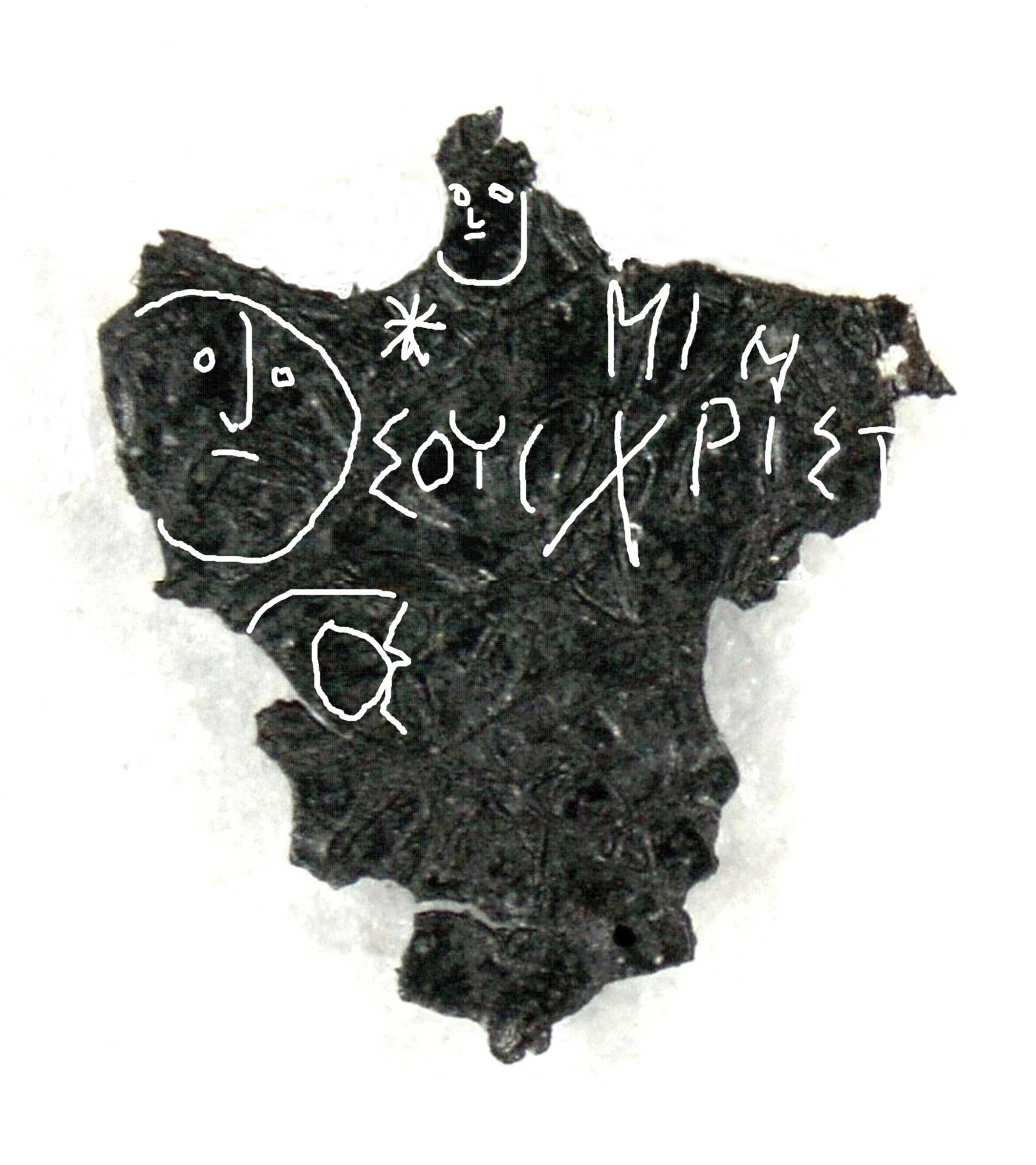

The black snowflake of 20 december 2013
John Bjarne Grover
When in late 2013 I started to study matter ex nihilo, I was much fascinated by some small black flakes with an apparent mystic code - it looked like messages sent from remote intelligences. I microscoped and studied these flakes for quite a while and tried to crack the mystic code, without succeeding - untill one day I discovered that they all came from some eroding plastic coating on a headset I used for listening to music - from the bridge that passed from ear to ear above the head - then the magic vanished.
But as long as I still believed that they were truly 'ex nihilo', they did possess some magic force. One of the best I found was this one on 20 december 2013 - close to the darkest day of the year - it seemed to show a black Christ spreading his arms out for showing the text "I am IESOUS XRISTOS":


Or is it MIMESIS XRISTOU? The moral is that matter ex nihilo probably to some extent is subjective and faith-driven, understanding the mystery of faith, and that what makes the serious study of it difficult is people's angst for that HAHA! when it turned out to be just some potato peel. Haha, and you thought it was from heaven or something? The art is to understand that matter ex nihilo probably depends on your good faith. If you lose that, then the matter does not materialize. It is like social performance.
If it says MIMESIS XRISTOU - that could be just the answer to the riddle of matter ex nihilo. The turning sun under the one hand.
Did Christ imitate human reality or do humans imitate Christ? Clearly this 'imitation' is not a matter of human administration.
Do these black snowflakes from the SONY headset mean that it was ridiculous nonsense? Well, it could mean that the Lord had surveyed the production of the headsets and earmarked one of them for being sent to Vienna "so that John Bjarne can buy it there" - and a piece of it was even impregnated with a certain mystic message in code to fall off and down on his desk there. This would be one aspect of the mystery of matter. It says that the derivational history is complex - this is in line with ideas of generative grammar which leads to the conclusion that recursive matter ex nihilo can be of any substance and have any form.
© John Bjarne Grover
On the web 18 january 2018
Last updated 21 january 2018